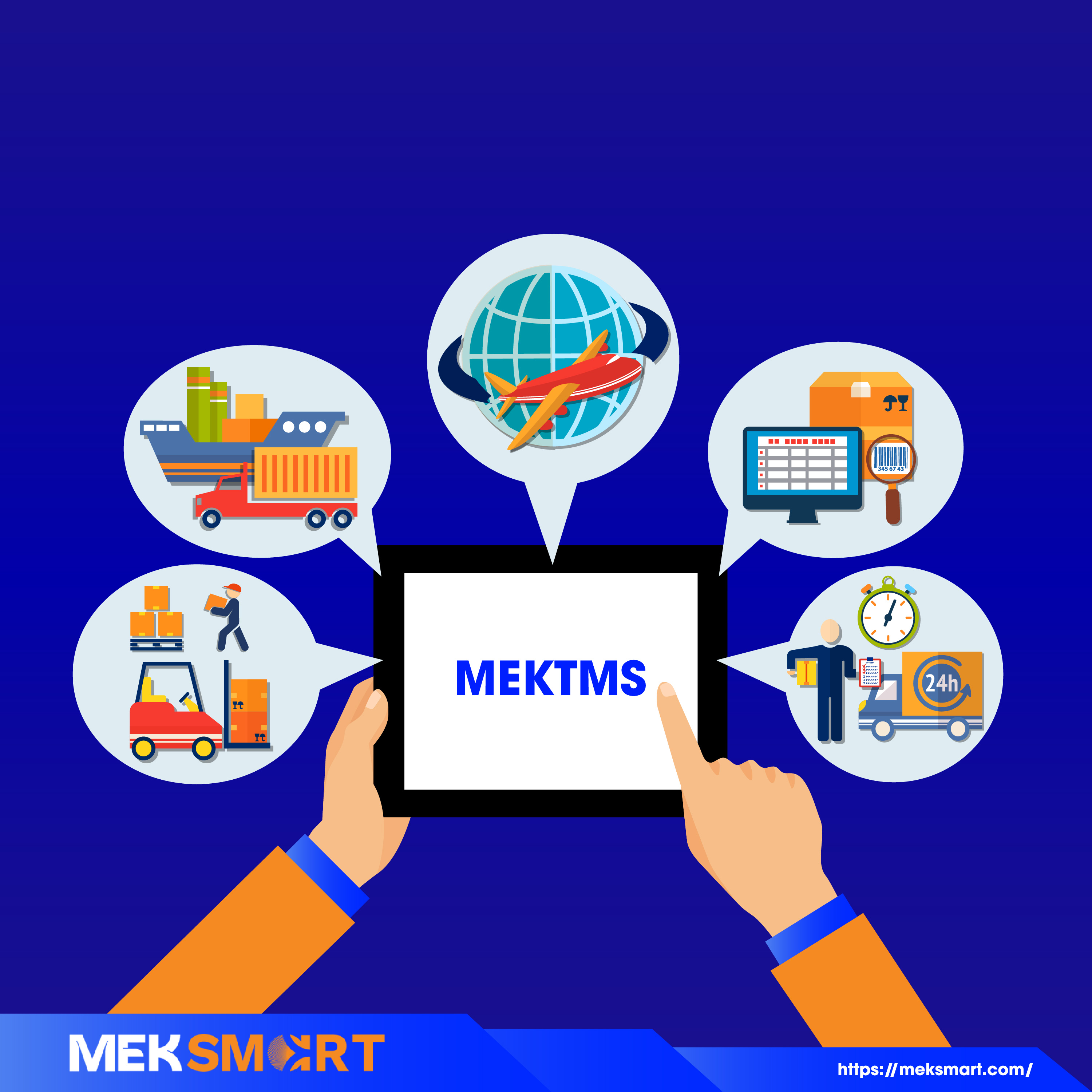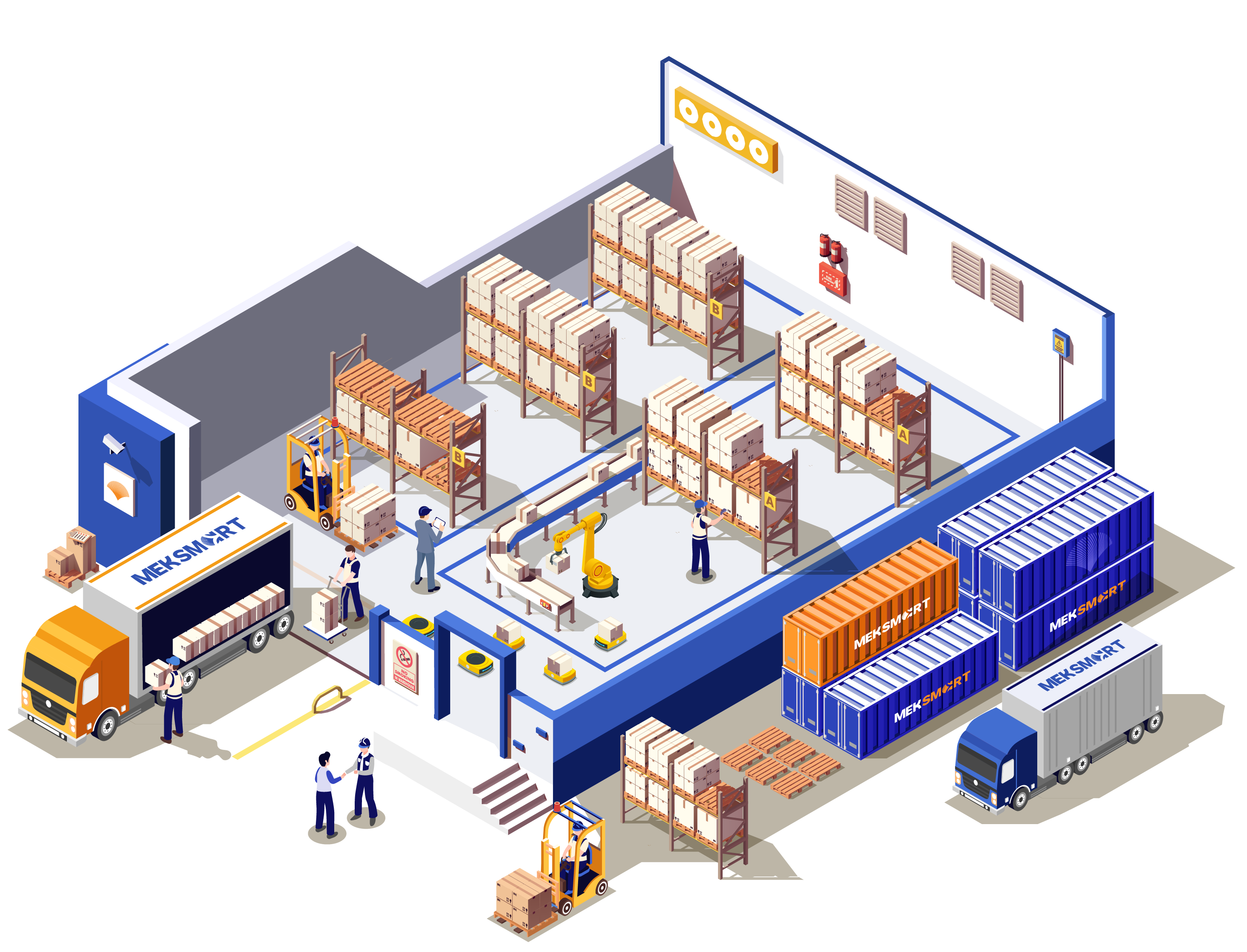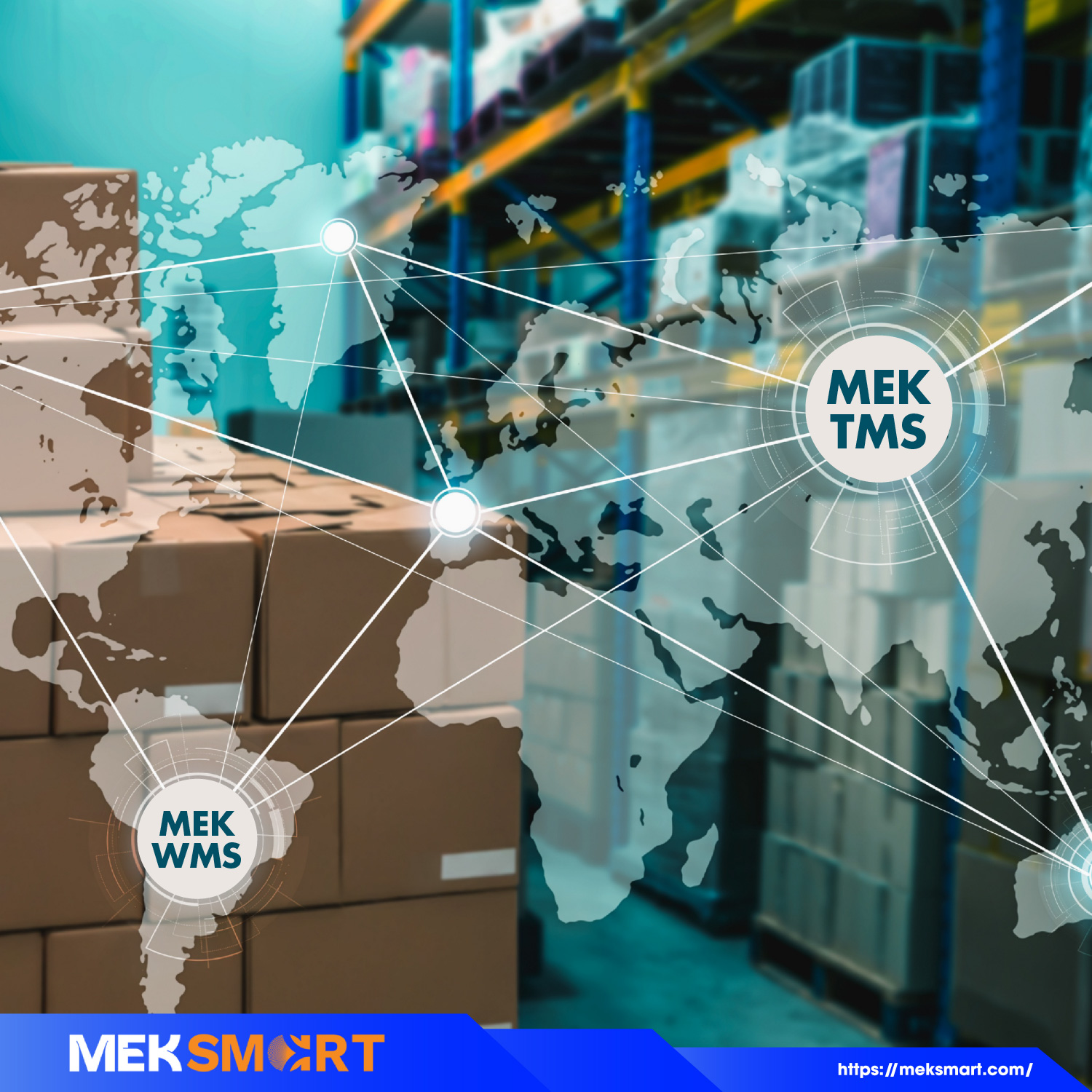MEKSMART
GENERAL NEWS
Author: Meker Meksmart
Update: 23/07/2025
OPTIMIZING SUPPLY CHAIN TOWARDS "PIN LOGISTICS" FOR VIETNAMESE ENTERPRISES
With globalization and technological advancement, the scope and potential benefits of optimizing the supply chain for the entire company have become inevitable in recent years.
Vietnam has great potential to develop modern logistics, especially when e-commerce and import-export are growing rapidly. This is an opportunity for businesses to improve their logistics systems, leading the trend of digital transformation in the supply chain.
However, many businesses are still facing fragmented operating systems, high logistics costs and lack of synchronization in storage - transportation - delivery.
How to optimize the supply chain for top logistics with Meksmart to find out now!
1. What is a supply chain? Why is it necessary to optimize the supply chain?
A supply chain is a system that closely links many stages for the purpose of producing and delivering products to users. The supply chain includes activities of finding raw materials, manufacturing, storing - managing goods, transporting to distributors and customers, end users through transportation methods.
The supply chain includes all steps involved in providing complete products/services to customers. In other words, the supply chain is the "backbone" that helps goods and services to be produced, transported and distributed in an optimal way to increase efficiency and seamlessness.

Supply chain
Why is it necessary to optimize the supply chain?
Supply chain optimization is the process of improving and enhancing the efficiency of stages in the chain to reduce costs to a minimum, increase delivery speed, reduce errors and enhance customer experience.
Optimizing the supply chain ensures that organizations maintain a competitive advantage in the production and distribution of products. If supply chain management is costly and inefficient, it will make you more susceptible to business risks such as production delays, inventory shortages, quality issues, and supplier fraud.
Supply chain optimization is no longer an option but a must if businesses want to develop sustainably in the modern business environment. A well-organized and efficient supply chain is the foundation for reaching the pinnacle of logistics, where every step of operation is tightly controlled, flexible, and comprehensively optimized.
First, reducing operating costs is the top goal when optimizing the supply chain. By eliminating redundant processes, strictly controlling inventory, and optimizing transportation routes, businesses can significantly save unnecessary costs. This is especially important in the context of escalating fuel, labor, and logistics costs.
Second, an optimized supply chain increases competitiveness in the market. When businesses deliver faster, on-time and more accurately, customers will appreciate the professionalism and trust in the service. That is the great competitive advantage that top logistics brings.
Third, responding quickly to market fluctuations is a vital requirement in a volatile era. A flexible supply chain allows businesses to quickly adjust production and distribution plans according to fluctuations in demand, scarcity of raw materials or unexpected risks (such as transportation disruptions, natural disasters, epidemics, etc.).
Finally, optimizing the supply chain brings higher overall operational efficiency, helping businesses improve labor productivity, reduce losses, control risks and make the most of available resources. At that time, profit margins are significantly improved, creating the premise for market expansion and long-term growth.
[Figure 2] - The role of supply chain optimization
2. Stages in supply chain optimization
2.1. Supply Chain Design
The first stage focuses on establishing the overall structure of the supply chain. Businesses need to analyze and determine strategic factors such as:
- Location of facilities: factories, distribution centers, warehouses
- How products move between points in the chain
- Forecasting demand by region, market and season
- Selecting suppliers, establishing stable sources of raw materials
- Making production plans and operating schedules suitable for operational capabilities
- Good design will create a solid foundation for operating the supply chain effectively, economically and with the ability to expand in the future.
2.2. Supply Chain Planning
After having an overall design, businesses need to make a detailed operational plan to connect the links in the chain. This phase includes:
- Developing a supply chain strategy implementation plan
- Planning inventory, optimal stock levels and replenishment cycles
- Coordinating resources such as human resources, equipment, and transportation vehicles
- Balancing supply and demand, ensuring goods are always ready to serve customers without surplus or shortage
- Effective planning helps businesses be proactive in operations, reduce the risk of disruption and improve market responsiveness.
2.3. Supply Chain Execution
The final stage focuses on implementing the proposed plans through supporting systems and technologies. Including:
- Warehouse and inventory management: using WMS software to optimize storage, classification and order processing
- Transportation management (TMS): planning routes, coordinating vehicles, monitoring delivery progress
- Order management: processing orders in real time, accurate and synchronized distribution
- Supply chain visibility: tracking the status of each link from supplier to customer
- Supporting timely decision making: thanks to analysis tools, warnings and flexible adjustments during operation
- Effective implementation ensures the entire supply chain operates smoothly, according to plan, thereby contributing to improving business efficiency and customer experience.
[Figure 3] - Process in supply chain optimization
3. Meksmart - Providing top logistics solutions to optimize the supply chain
With the mission of accompanying Vietnamese businesses on the journey to optimize the supply chain, Meksmart brings a comprehensive logistics ecosystem: from domestic and international transportation to warehousing, delivery and e-commerce support.
To achieve "top logistics", Meksmart develops two outstanding technology platforms:
* MEKWMS - Smart warehouse management system
MEKWMS (Warehouse Management System) is a technology solution developed by Meksmart to optimize all warehouse logistics operations. This system allows real-time inventory tracking and management, while automatically classifying, arranging and coordinating goods accurately. MEKWMS also helps optimize the flow of goods in and out, shortening processing time and integrating timely warning reports on warehouse status, contributing to improving warehouse operation efficiency.

MEKWMS - Smart warehouse management system for top logistics
* MEKTMS - Comprehensive transportation management software
MEKTMS (Transport Management System) helps businesses build optimal transportation plans in just a few minutes, while automating the entire delivery process. From route tracking, cost control to fleet performance management, MEKTMS provides a transparent, synchronized and highly efficient view. Thanks to that, businesses can shorten processing time, save human resources and operating costs significantly.

MEKTMS - Comprehensive transportation management software
Both of these solutions are the "key" to help Vietnamese businesses optimize the supply chain, move towards modern logistics management, automate and make the entire process transparent.
Conclusion
In the era of fierce competition, businesses not only need good products, but also need a strong, flexible and efficient supply chain. Optimizing effective operations is not only a strategy but also the key to achieving success and sustainability for businesses. Meksmart is the solution to the ultimate logistics problem, helping Vietnamese businesses save costs, optimize operations and improve their position in the market.
Contact Meksmart today for advice on comprehensive supply chain solutions for your business.













